What is eyelid surgery?
Eyelid surgery, or blepharoplasty, is a surgical procedure to improve the appearance of the eyelids.
Surgery can be performed on the upper lids, lower lids or both.
Whether you want to improve your appearance or are experiencing functional problems with your eyelids, eyelid surgery can rejuvenate the area surrounding your eyes.
What eyelid surgery can treat
- Loose or sagging skin that creates folds or disturbs the natural contour of the upper eyelid, sometimes impairing vision
- Fatty deposits that appear as puffiness in the eyelids
- Bags under the eyes
- Drooping lower eyelids that reveal white below the iris
- Excess skin and fine wrinkles of the lower eyelid
Who is a good candidate for eyelid surgery?
Good candidates for eyelid surgery include:
- Healthy individuals with no medical conditions that can impair healing
- Nonsmokers
- Individuals with a positive outlook and realistic goals
- Individuals without serious eye conditions
Remember that the eyelids are part of the face. The appearance of a drooping upper lid may also be due to relaxation of the forehead skin and eyebrow. Sometimes stretching out of the upper eyelid muscle may cause a drooping eyelid. This is called eyelid ptosis and requires a different surgical treatment.
Your plastic surgeon will evaluate your facial anatomy thoroughly and will discuss what procedures might best remedy your concerns.
What should I expect before eyelid surgery?
What should I expect during a consultation for eyelid surgery?
During your eyelid surgery consultation be prepared to discuss:
- Your surgical goals
- Medical conditions, drug allergies, previous medical treatments and specifically any problems you have had with your eyes
- Current prescription medications, including vitamins, herbal supplements, alcohol, tobacco and drug use
- Previous surgeries
Your plastic surgeon will also:
- Evaluate your general health status and any pre-existing health conditions or risk factors
- Take photographs
- Discuss your eyelid surgery options
- Recommend a course of treatment
- Discuss likely outcomes of eyelid surgery and any potential risks
- Discuss the type of anesthesia that will be used
The consultation is the time to ask your plastic surgeon questions. To help, we have prepared a checklist of questions to ask your plastic surgeon that you can take with you to your eyelid surgery consultation.
It’s natural to feel some anxiety, whether it’s excitement for your anticipated new look or a bit of preoperative stress. Don’t be shy about discussing these feelings with your plastic surgeon.
What questions should I ask my plastic surgeon about eyelid surgery?
Use this checklist of as a guide during your eyelid surgery consultation:
- Are you certified by the American Board of Plastic Surgery?
- Were you specifically trained in the field of plastic surgery?
- How many years of plastic surgery training have you had?
- Do you have hospital privileges to perform this procedure? If so, at which hospitals?
- Is the office-based surgical facility accredited by a nationally- or state-recognized accrediting agency, or is it state-licensed or Medicare-certified?
- Am I a good candidate for this procedure?
- What will be expected of me to get the best results?
- Where and how will you perform my procedure?
- What surgical technique is recommended for me?
- How long of a recovery period can I expect, and what kind of help will I need during my recovery?
- What are the risks and complications associated with my procedure?
- How are complications handled?
- How can I expect my eyes to look over time?
- What are my options if I am dissatisfied with the cosmetic outcome of my eyelid surgery?
- Do you have before-and-after photos I can look at for this procedure and what results are reasonable for me?
What are the risks of eyelid surgery?
The decision to have plastic surgery is extremely personal and you will have to weigh the potential benefits in achieving your goals with the risks and potential complications of eyelid surgery. Only you can make that decision for yourself.
You will be asked to sign consent forms to ensure that you fully understand the procedure and any risks and potential complications.
Possible eyelid surgery risks include:
- Anesthesia risks
- Swelling and bruising
- Bleeding from the incision lines
- Dryness to the eyes
- Sensitivity to sun or other bright light
- Difficulty closing your eyes
- Ectropion, an outward rolling of the lower eyelid
- Infection
- Lid lag, a pulling down of the lower eyelid, may occur and is often temporary
- Temporary or even permanent change in vision, and very rare chance of blindness
- Changes in skin sensation or numbness of the eyelashes
- Pain, which may persist
- Possible need for revision surgery
- Unfavorable scarring
These risks and others will be fully discussed prior to your consent. It is important that you address all your questions directly with your plastic surgeon.
How should I prepare for eyelid surgery?
In preparing for eyelid surgery, you may be asked to:
- Get lab testing or a medical evaluation
- Take certain medications or adjust your current medications
- Stop smoking
- Avoid taking aspirin, anti-inflammatory drugs and herbal supplements as they can increase bleeding and bruising
Eyelid surgery should be performed in an accredited office-based surgical facility, a licensed ambulatory surgical center, or a hospital. Be sure to arrange for a friend or family member to drive you to and from surgery, and to stay with you the first night following surgery.
What are the steps of an eyelid surgery procedure?
An eyelid surgery procedure includes the following steps:
Step 1 – Anesthesia
Medications are administered for your comfort during the surgical procedure. The choices include intravenous sedation or general anesthesia. Your doctor will recommend the best choice for you.
Step 2 – The incision
The incision lines for eyelid surgery are designed so the resultant scars will be well concealed within the natural structures of the eyelid region.
The upper eyelid can be corrected through an incision within the natural crease on the eyelid. This allows for removal or repositioning of fat deposits, tightening of muscles and removal of excess skin.

Conditions of the lower eyelid may be corrected with an incision just below the lower lash line. Through this incision, excess skin in the lower eyelid is removed. Again, the excess fat can be repositioned or removed.
A transconjunctival incision, created on the inside of the lower eyelid, is an alternate technique to correct lower eyelid conditions and redistribute or remove excess fat. With this technique, no skin is removed.
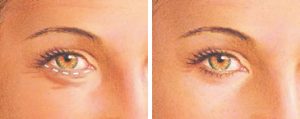
Step 3 – Closing the incisions
Eyelid incisions typically are closed with sutures or skin glue. Sutures are removed within one week.
Your surgeon may also suggest use of a laser or chemical peel to reduce discoloration of the lower eyelids.
Step 4 – See the results
The results of eyelid surgery will appear gradually as swelling and bruising subside to reveal a smooth, better-defined eyelid and surrounding region, and a more alert and rejuvenated appearance. Get more information about eyelid surgery results.
What should I expect after eyelid surgery?
What should I expect during my eyelid surgery recovery?
During your eyelid surgery recovery, lubricating ointment and cold compresses may be applied, and in some cases your eyes may be loosely covered with gauze, after your procedure is completed.
You will be given specific instructions that may include how to care for your eyes, medications to apply or take orally to aid healing and reduce the potential for infection, specific concerns to look for at the surgical site or in your overall health and when to follow-up with your plastic surgeon.
Initial healing may include some swelling, bruising, irritation, dry eyes and discomfort that can be controlled with medication, cold compresses and ointment. Irritation at the incision sites is also possible.
Be sure to ask your plastic surgeon specific questions about what you can expect during your individual recovery period.
- Where will I be taken after my surgery is complete?
- What medication will I be given or prescribed after surgery?
- Will I have dressings/bandages after surgery?
- When will they be removed?
- Are stitches removed? When?
- When can I resume normal activity and exercise?
- When do I return for follow-up care?
Eyelid surgery recovery & sun protection
You must practice diligent sun protection and use darkly tinted sunglasses until the healing process is fully complete.
What results should I expect after eyelid surgery?
The results of eyelid surgery will be long-lasting. While there usually is little pain involved in this surgery, there can be swelling or bruising. Most patients are presentable to the public in 10-14 days. However, it may take a few months before final healing is completed.
While eyelid surgery can be expected to correct certain conditions permanently, you will continue to age naturally. Ongoing sun protection will help to maintain your results.
Although good results are expected from your procedure, there is no guarantee. In some situations, it may not be possible to achieve optimal results with a single surgical procedure and another surgery may be necessary.
Following your post-operative instructions is essential to the success of your surgery. It is important that the surgical incisions not be subjected to excessive force, abrasion or motion during the time of healing.
Your doctor will give you specific instructions on how to care for yourself.
Eyelid Surgery Before & After Photos
View before and after photos of eyelid surgery procedures performed by members of the American Society of Plastic Surgeons.
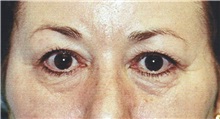 | 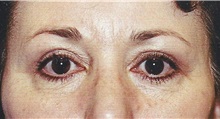 | 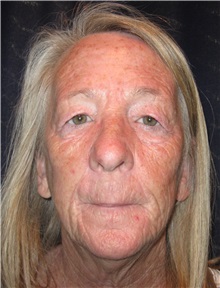 | 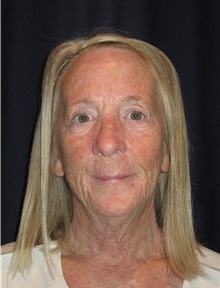 |
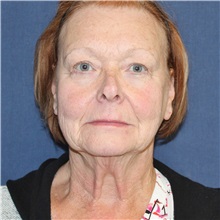 |  | 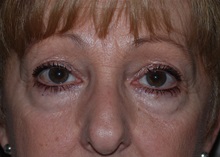 | 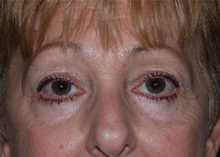 |
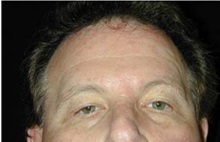 |  | 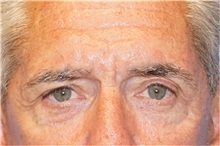 | 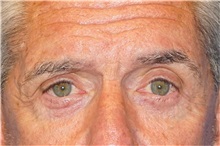 |
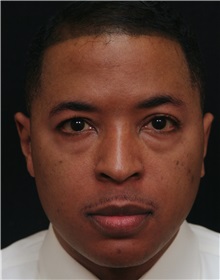 | 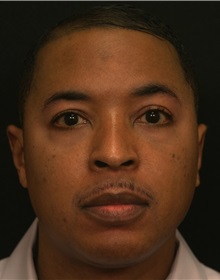 | 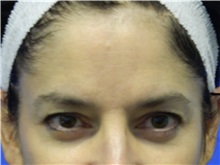 | 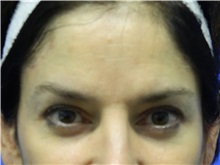 |
 | 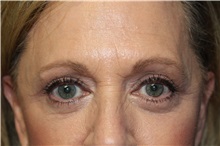 | 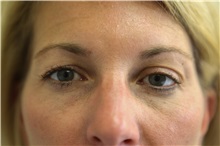 | 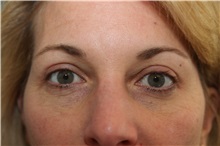 |
What words should I know about arm lift surgery?
Arm lift
A surgical procedure, also known as brachioplasty, to correct sagging of the upper arms.
Axilla
The underarm area.
Brachioplasty
A surgical procedure, also known as arm lift, to correct sagging of upper arms.
General anesthesia
Drugs and/or gases used during an operation to relieve pain and alter consciousness.
Hematoma
Blood pooling beneath the skin.
Intravenous sedation
Sedatives administered by injection into a vein to help you relax.
Liposuction
Also called lipoplasty or suction lipectomy, this procedure vacuums out fat from beneath the skin’s surface to reduce fullness.
Local anesthesia
A drug injected directly to the site of an incision during an operation to relieve pain.
Skin laxity
Degree of loose skin.
Sutures
Stitches used by surgeons to hold skin and tissue together.
How do I choose a plastic surgeon for eyelid surgery?
Eyelid surgery involves many choices. The first and most important is selecting a board-certified plastic surgeon you can trust who is a member of the American Society of Plastic Surgeons (ASPS).
ASPS member surgeons meet rigorous standards:
- Board certification by the American Board of Plastic Surgery® (ABPS) or in Canada by the Royal College of Physicians and Surgeons of Canada®
- Complete at least six years of surgical training following medical school with a minimum of three years of plastic surgery residency training
- Pass comprehensive oral and written exams
- Graduate from an accredited medical school
- Complete continuing medical education, including patient safety, each year
- Perform surgery in accredited, state-licensed, or Medicare-certified surgical facilities
Do not be confused by other official-sounding boards and certifications.
The ABPS is recognized by the American Board of Medical Specialties (ABMS), which has approved medical specialty boards since 1934. There is no ABMS recognized certifying board with “cosmetic surgery” in its name.
By choosing a member of the American Society of Plastic Surgeons, you can be assured that you are choosing a qualified, highly-trained plastic surgeon who is board-certified by the ABPS or the Royal College of Physicians and Surgeons of Canada.
